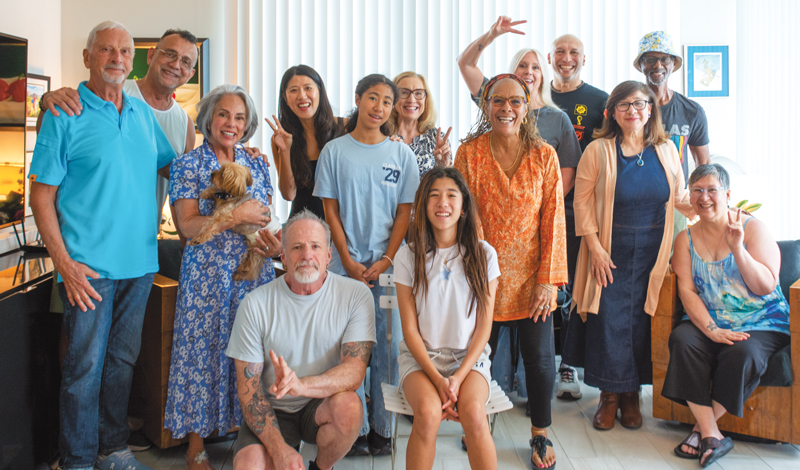In June 1928, at the age of 57, Tsunesaburo Makiguchi, a forward-thinking educator, took faith in Nichiren Buddhism at the urging of a friend. Writing of this decision, he said, “With an indescribable joy, I completely changed the way I had lived for almost 60 years.”[1]
With this inner awakening, he set out to realize “a bold aspiration,”[2] establishing the Soka Kyoiku Gakkai (Value-Creating Education Society) with his disciple Josei Toda on Nov. 18, 1930.
What originally started as a group of educators focused on the happiness of students gradually expanded its scope to the happiness of all people, growing into a bold religious movement based on the life-affirming philosophy of Nichiren Buddhism.
Makiguchi traveled throughout Japan despite his age to spread Nichiren Buddhism, holding discussion meetings in people’s homes.
Ikeda Sensei recounts:
Mr. Makiguchi also readily went anywhere to meet with even a single individual. Once, he traveled all the way to Kagoshima [in Kyushu, Japan’s southwesternmost main island] to meet and speak with the parents of a young man who had joined the Soka Kyoiku Gakkai in Tokyo. It was an extremely long journey by third-class train car, and it must have been very hard on a man of his advanced age. But for the sake of Buddhism, he was prepared to spare no pains. Through his great sincerity, he was able to deepen the parents’ understanding of Nichiren Buddhism.[3]
During the first two years of World War II, amid increasing surveillance by the Special Higher Police, he attended more than 240 discussion meetings. And leading up to his arrest in July 1943, he had personally introduced some 500 people to Nichiren Buddhism. Sensei says of his spirit:
A young man once told Mr. Makiguchi that he thought it would be better to hold large-scale lectures rather than discussion meetings. “No, it wouldn’t,” Mr. Makiguchi replied without hesitation. “Dialogue is the only way to communicate with another about life’s problems. At a lecture, listeners inevitably feel uninvolved. Even the Daishonin’s treatise ‘On Establishing the Correct Teaching for the Peace of the Land’ was written in the form of a dialogue, you know.”[4]
Sensei also shares Makiguchi’s focus on sharing faith experiences to encourage others:
Mr. Makiguchi called discussion meetings “discussion meetings offering experimental proof of a life of great good.” By this, he meant demonstrating through actual examples in our lives, in a way convincing to all, the wonderful effect of putting our Buddhist faith based on the Mystic Law into practice in the real world, of a life of human revolution dedicated to the welfare of others and society.[5]
In July 1943, at 72, Makiguchi traveled to Izu Province, fully aware of the risks involved, to attend what came to be his last discussion meeting. He was arrested on July 6 on charges of blasphemy and violation of the Peace Preservation Law. Josei Toda was arrested on the same day.
Makiguchi spent 500 days in solitary confinement and was repeatedly subjected to intense interrogation. However, he remained unshaken and firmly stood up for his beliefs, even introducing his prison guards to Nichiren Buddhism.
On Nov. 18, 1944—exactly 14 years after the Soka Gakkai was founded, Makiguchi died in prison of old age and malnutrition, a martyr to his beliefs.
Upon his release from prison on July 3, 1945, Toda promptly set out to avenge his mentor’s death by rebuilding the Soka Gakkai into a bastion of peace. He did so by emphasizing the importance of discussion meetings, the tradition started by his mentor, Makiguchi. It was Toda’s conviction that “one actual discussion meeting is far more effective in turning the wheels of kosen-rufu than a million fine-sounding words of theory.”
Sensei states:
We don’t speak of the “tradition” of the discussion meeting simply because the pattern of holding such meetings has continued for many years. Rather, with the discussion meeting as the central focus of our activities, we have striven to treasure each person; this spirit to value and respect the individual is the tradition of the SGI. The SGI has unceasingly encouraged people in their ordinary yet valiant struggles. This is the tradition of the discussion meeting.[6]
Today, these small gatherings filled with warm life-to-life exchanges and dialogues continue throughout the world. In SGI-USA alone, over 2,400 districts gather monthly for discussion meetings at centers and homes in every corner of the U.S., strengthening the alliance of good and spreading ripples of peace into our communities.
—Prepared by the World Tribune staff
You are reading {{ meterCount }} of {{ meterMax }} free premium articles

